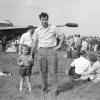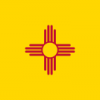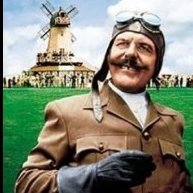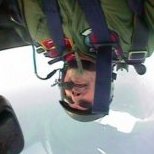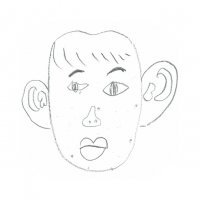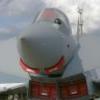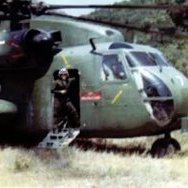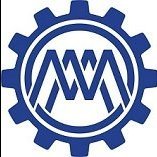-
Posts
1,288 -
Joined
-
Last visited
About TheRealMrEd
- Birthday 06/04/1944
Profile Information
-
Gender
Male
-
Location
Marietta, Georgia USA
-
Interests
1/72 US military aircraft and small scale r/c aircraft.
Recent Profile Visitors
TheRealMrEd's Achievements

Very Obsessed Member (5/9)
5.5k
Reputation
-

Republic F-84 Gallery
TheRealMrEd replied to Enzo the Magnificent's topic in Republic F-84 Jet fighter series STGB
1/72 YF-96A/YF-84F kit bash: Thanks for looking... Ed- 12 replies
-
- 13
-

-

YF-96A/F-84F Prototype Kitbash
TheRealMrEd replied to TheRealMrEd's topic in Republic F-84 Jet fighter series STGB
Well, there wasn't much left to finish up. Added the landing gear and doors, early 4-hole airbrake, the landing light and strut in front of the nose gear, and the little door in front of the other nose gear doors: Below, just a comparison shot of the grand pappy and sonny boy! And she's done. Pics going up over in the gallery. For those interested, the origial still exists at The Museum of the United States Air Force (as they're calling it these days!), but with the horizontal stabilizers having anhedral, at it was also the pilot test frame for what would become the F-84K FICON Thunderflash. I actually built one of these also, for the, I believe, 1983 Atlanta IPMS Nationals, only hanging from a trapeze under a 1/72 scale RB-36 something or other, which I no longer have space to display nor photograph properly. The B-36 is broken down with it's removable wings off, laying in my hobby room. I note the the right horizontal stab has gone away... This model is not entered into this group build, as it's about 41 years too old....😬 Ed -

YF-96A/F-84F Prototype Kitbash
TheRealMrEd replied to TheRealMrEd's topic in Republic F-84 Jet fighter series STGB
Hello again. Sorry for the long time between updates. "Life" has interrupted my modeling a LOT lately, and the fact that I had to redo the base coat on this aircraft model 3 times to get something reasonable certainly didn't help! In any event, I finally got her in paint, with two or three extra shades of metal here and there (very slight visible difference between, as on the real aircraft), with all the usual masking back and forth using Parafilm "M". Picture below shows everything else covered with the film so that the anti-glare panels could be painted with FS34092, Dark Euro I Green: Above right, after masking was removed. Note that the front slats had to be scribed in, as they differed from the donor F-84F wings. Next, starting in with decals. Note the extra large star-and-bar insignia on the top of the left wing. I used a 48" round version: Above center, the real thing. Oddly enough, there was no national insignia on the lower wing, at least early on (above, far right). Next, finished up the rest of the decals: including a slightly over-sized radio access panel (on the right rear side of the canopy. Tried several methods, this was my closest shot! Another, more overhead shot: Above center and right, the "Republic YF-96A" painted on the real aircraft, and far right, my best efforts after much work in Photoshop Below, the actual size for 1/72. Prints here larger than real life, due to high DPI count: Ditto the size thing above. I always have to print multiple copies on clear, so that I can layer a second decal atop the first, after the former has dried. Otherwise, they are way too pale. Alas, for an Alps printer! By the way, due to posting requirement on this sight, I cannot post .psd or .pdf files that would show the white areas as transparent. As always, anyone needing these formats of my artwork can PM me and I'll send them along free -- to any non-commercial user/venture. The problem with the nose gear is that the Heller kit gear has the fender atop the tire -- not used on the YF-96A. Bill Dye, on his build, chose to scratch build his, and I'm not sure what John did. I chose to use the small chisels and files shown above to file down and remove the fender and the fender braces. That's all for now. Will try to be back BEFORE the end of the build for the Grand Finale... Ed -
TheRealMrEd started following YF-96A/F-84F Prototype Kitbash and TheRealMrEd's 2023 Few Builds...
-
Hello, sorry to be late summarizing last years' efforts, but here they are, finally: First off, the Anigrand Curtis XP-60: A few more pics HERE.. Followed by a P-47B Double Twister conversion, using the 1/72 Academy P-47D kit: For those interested, the build thread is HERE.. Then, a P-47F conversion, with the laminar flow wing, also using the Academy P-47D kit: Build thread HERE.. Next up, one of my personal favorites, which I have seldom seen built, another conversion of the Academy kit, the P-47B: A few more pics HERE.. Next up, the Brengun A-36 Apache kit, but with so much work needed to make it accurate, it might as well have been a conversion: A LOT of detail changes and accuracy conversation HERE.. And last for the year, and one of my all-time favorites, the new 1/72 scale XB-51 bomber kit from Mikro Mir: Before starting one of these I would SERIOUSLY recommend that you read through the build thread (you'll see why) HERE.. Well, that's all. Not a lot for the year, compared to normal, but some fairly interesting ones, I think. Thanks, as always, for looking! Ed
-

YF-96A/F-84F Prototype Kitbash
TheRealMrEd replied to TheRealMrEd's topic in Republic F-84 Jet fighter series STGB
And yet again... Some Bondo primer/filler has been added to the plastic strip, and has been sanded a bit. The arrow points to the Italaeri trim tab, which will have to be removed, eventually.: Above right, as the Cockpit was already installed, I had no other resort than to sand both the front cockpit coaming and the cockpit itself down to a more level position. Since I had used G-S watch cement for the initial assembly, all I had to do was apply some 91% alcohol to dissolve the glue joint. If I were to do it again, I would saw a small horizontal wedge out of the front cockpit coaming, instead, before assembling the coaming to the Heller fuselage.. Next, a bunch more filler and sanding. Arrows point to the Italaeri trim tabs that also will have to be removed, later on: Above right, the tail-feathers have been added, filled, and sanded to shape. At this stage, the small amount of re-scribing that I will do has been done. Next, after removing the tape from the cockpit (only done to protect the canopy from sanding scratches), I re-masked the canopy with Bare Metal foil, sprayed on a coat of grey primer, and sanded and filled some more: Starting to take shape now, a slender filly of an F-84F, in contrast to the later, final "Hog" shape... Well, back later, after several reps of fill, sand, paint, repeat, etc. ... Ed -

YF-96A/F-84F Prototype Kitbash
TheRealMrEd replied to TheRealMrEd's topic in Republic F-84 Jet fighter series STGB
Hello again: This time, the fuse halves have been joined, and the wings added, filled and partially sanded. The cockpit has been painted and installed, but there's still lots or work to do on the Hawk to Heller fuselage cockpit area insert: After gluing on the Hawk canopy, and fairing it in a bit, I checked it against another picture of the YF-96A, and promptly found two issues: The first, labeled "B" on the actual aircraft photo, was that the actual moulding of the Hawk kit canopy front windscreen area was way to high, giving the canopy to high a "sit" in the front. Have to figure out what to do about that!. After comparing the Italaeri vertical stabilizer, by blowing up the photo to the needed size, I found that the Italaeri fin was the correct height, but shaped slightly different at the top, but more importantly, the vertical stab wasn't broad enough in chord at the lower front edge ("A" in the photo). To fix this, I added a bit of plastic card to the front edge, and laying it atop the re-sized photo, sanded it down to the needed profile: Some filler and sanding will be needed here as well...sigh. I got some "firgurating" to do... More later, Ed -

YF-96A/F-84F Prototype Kitbash
TheRealMrEd replied to TheRealMrEd's topic in Republic F-84 Jet fighter series STGB
Hello again Next, the cockpit area is removed from the Hawk kit: Above right, the glued-together halves of the Hawk kit cockpit are test fit. There will be some sanding to do. Also, the mount hole for the wing tabs of the Heller kit have been enlarged, allowing for proper fit of the Italaeri wings later on. This will allow them to be fitted at the proper height on the fuselage and the proper fore-and-aft location. Next, the Italaeri wings have been glued to the Heller fuselage halves, first with Weld-On #3 liquid glue, and after that was thoroughly dry, backed up with some CA glue and then filled and sanded. Above, "A" points out the Heller intake divider which is installed at this point. Care must be taken to assure that it is dead centered on the fuselage center-line. The fit is not dead-on, and it took me a couple of tries. "B" shows where some lead weight was added, and it took a little carving and sanding here so that the resin cockpit would fit properly. And last, "C" indicates where thick CA was slathered on inside the fuselage halves to help hold the wings on better. The Italaeri wing had to have their mounting stubs shortened also, to clear the resin cockpit tub. And that's it for this round! BTW if any moderator, or someone with more knowledge than I could add the "9" to the thread title (as in YF-96A), I would be grateful... Ed -
Hello again. As this is one gaping hole in my collection, I thought I'd take my turn at this ground-breaker. The first of these I ever saw built, was by Bill Dye, over on Cybermodeler, years ago: Here. Also, our own JohnR did one here on Britmodeler in 2011: Here. I don't know that mine will turn out as nice as theirs, but here goes: I will start with the makin's as they say, the Hawk F-84F (which actually depicts the F-96A, more or less accurately), the ubiquitous Heller F-84 kit, which is my first choice for F-84 mods, and an old, previously started Italaeri F-84F kit, stared years ago, then binned when the PJ Productions second release came out: The real thing looked like so: I had an old resin F-84 cockpit in the spares box, so I decided to use that. Also, the afore-mentioned PJ Productions 2nd release F-84F kit mentioned above had the early style ejection seat, so I'll use that also. I began by first dry-fitting the Heller fuselage, and determining how much of the kits cockpit coaming, etc. had to be cut away for the resin cockpit to fit: Above right, after ungluing the old Italaeri wings, I moved them around on the Heller kit fuselage to determine their correct position, using various pics and drawings. They were NOT installed at this time, as a LOT of figuring out was needed to attach the wings, allow room for the resin cockpit, etc. Next the vertical stabilizer is removed from the Italaeri kit, using first a scriber, then a sharp #11 X-Acto blade: Above right, the Hawk kit is marked to show the section of the fuselage/canopy area that would need to be removed. Good old eyeball guessing was used here, as there are no convenient panel lines. Then, the Heller kit halves are sawn where needed to accommodate the Hawk parts: Above right, the vertical stab parts are removed from the Heller kit fuse halves. Well, that's a fair start. More next time. Ed
-

P-47D-23 Thunderbolt "Bonnie" 1/72
TheRealMrEd replied to Bruno P's topic in Work in Progress - Aircraft
Brilliant work. A true piece of art! Ed -
Cookenbacher started following TheRealMrEd
-

A Sabre Dead-End: the F-86C/YF-93A
TheRealMrEd replied to Sabrejet's topic in Work in Progress - Aircraft
Here now -- better late than never, I suppose. Always good to see some resin kit-munching! Ed -

New! Mikro Mir 1/72 Scale Martin XB-51 Bomber
TheRealMrEd replied to TheRealMrEd's topic in Work in Progress - Aircraft
I understand that, Phil! Ed -

New! Mikro Mir 1/72 Scale Martin XB-51 Bomber
TheRealMrEd replied to TheRealMrEd's topic in Work in Progress - Aircraft
I don't know whether they got it wrong, or whether I got it wrong because of lack of positive location pins/holes/slots, etc.on the model itself. I was just glad to get something done. The perfect 1/72 XB-51 model has yet to be built. I look forward to the next modeler up! Ed


